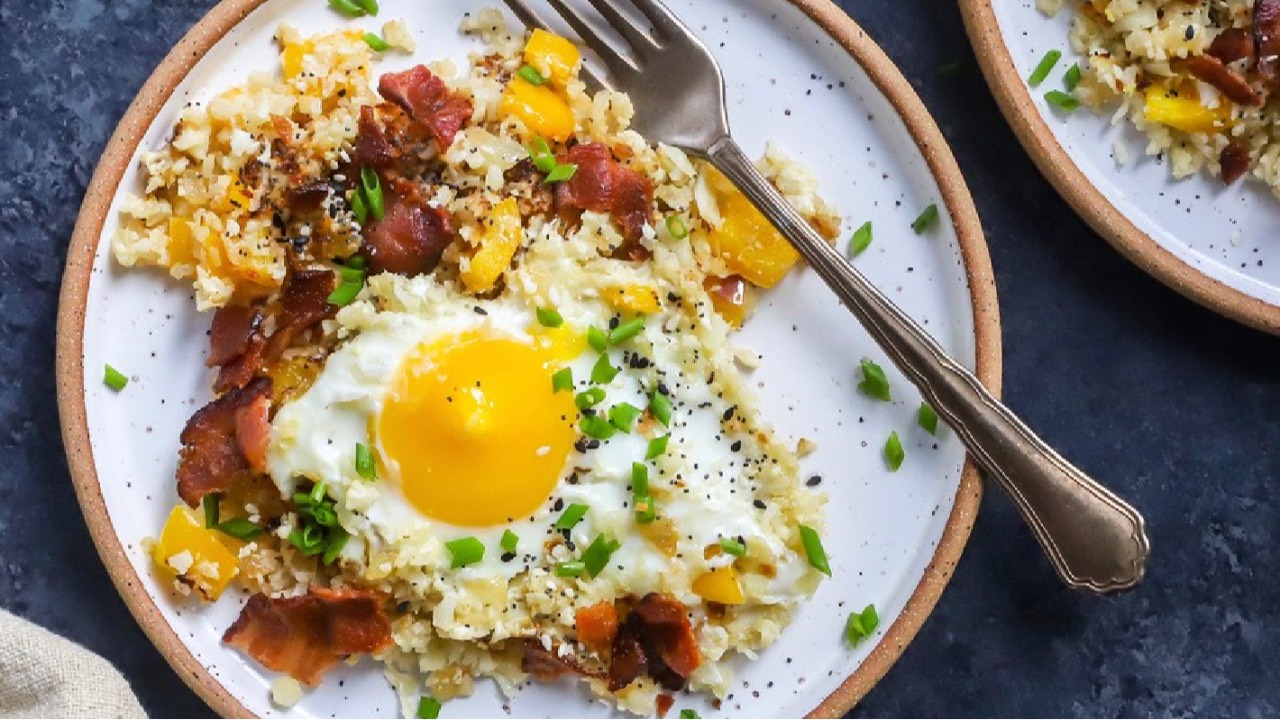Can’t Stop Snacking? Here’s Why Protein Might Be the Answer!

Something I hear often from those who join my meal plan membership is that even on a low-fat or low-carb diet, they struggled to resist late night trips to the pantry for snacks. After having joined, these same members share that they consistently feel full, satisfied and their cravings have vanished.

It might feel like a mystery to my members, but I’ve intentionally designed and created all of my recipes this way. My focus? Protein-rich recipes!
I think that in the world of nutrition, people often jump to cutting out groups of foods whether it’s fat, carbs, meat, plants, you name it. But after working with hundreds of people and taking nutrition intakes, what I've noticed is that people (mostly women) are under consuming protein and they’re having bothersome symptoms as a result (fatigue, cravings, low motivation.
Most of us inherently understand the importance of consuming adequate protein. We know it’s important for things like building muscle and balancing blood sugar, but it might play an even more complex role in nutrition than we realize.
Does protein intake control how much we eat?
There’s a name for this theory: the protein leverage hypothesis (PLH). As stated in this article, “the PLH predicts that humans prioritize protein when regulating food intake.” Speaking simply, it theorizes that humans will continue to eat food until they’ve consumed enough protein even if it means overconsuming fat and carbohydrates. I love the analogy that this article uses:
“Is this why it’s so easy for some of us to polish off an economy-sized bag of chips or cookies in one sitting but if we’ve had an enormous steak or pork chop we don’t exactly want to scarf down three or four more?”
Isn’t that so relatable? Is it possible that our biology drives us to continue consuming until our protein needs have been met, even at the expense of our overall caloric intake? If the protein leverage hypothesis is correct, we may be able to achieve our nutrition goals by placing the focus on optimal protein intake rather than cutting out food groups altogether.
So, what is “optimal” protein intake?
This is a highly debated question in the world of nutrition, and not one that is easily answered. In short, it depends. The same article links several studies that suggest around 1 gram of protein per kilogram (kg, not lb) of body weight is a good place to start, but that it may not be enough for most people.
I’d recommend and teach my members how to calculate their protein needs based on % of their daily calories, not just body weight. Starting with this suggestion I recommend checking in with your hunger cues throughout the day to see if you might need to up your protein intake even further. Pay attention to these signals:
- Are you feeling full and satisfied between meals?
- Do you crave salty or sweet snacks at the end of the day?
- Is it hard to resist the urge for late night snacking?
My Favorite Sources of Protein
Protein has a bad reputation for being boring (think plain chicken breast or cans of tuna). I’m a big believer that food should be fun, and we should eat foods that provide a pleasant experience. There are so many amazing, tasty sources of protein out there and it sometimes requires a little creativity to sneak in extra protein at every meal. Here are some of my favorites we had on the menus recently:
- Turkey avocado sandwich (31 grams of protein)
- Hamburger soup (34 grams of protein)
- Easy Chicken Fajitas with Refried Beans (35 grams of protein)
- Sweet Potato & Turkey Breakfast Hash (30 grams protein)
- Open-Face Tuna Melt with Broccoli (44 grams protein)
- One Pan Egg, Sausage & Leek with Grapes (25 grams of protein)
How Meal Planning Supports Your Goals
Even if you’re someone who naturally enjoys eating healthy and preparing food, it takes intention to eat a well rounded diet. It’s time consuming and sometimes tedious to calculate the amount of protein, fat, carbs and fiber in your meals! It’s highly possible that you’ll over or underestimate the amount of macronutrients in your food if you’re not experienced in tracking macros. On the other hand, obsessing over the number of calories and macros in every bite can promote a poor relationship with food.
These are just a few of the reasons I created the Meal Plan Membership in 2020. For nearly 5 years, I’ve been delivering curated meal plans, grocery lists and recipe cards to hundreds of people to support them in their quest for healthier meals. With an emphasis on real, whole foods and anti-inflammatory ingredients I’ve first-hand seen the empowerment that comes with nourishing your body.
To show you what I mean, here’s an example of the macronutrient breakdown in my weekly meal plans. As you can see, I prioritize protein along with a healthy balance between fats and carbohydrates.

If you think you could benefit from additional protein intake, you’re tired of macro counting or you’re just looking for something to spice up your routine: my Meal Plan Membership is opening for Spring Registration in just a few days. The doors open only four times a year, so don’t miss out on this opportunity to put the protein leverage hypothesis into practice and hit your nutrition goals.
Grab one of my Meal Plans!
Download a sample menu right from my meal plan membership and start enjoying my healthy recipes today!



